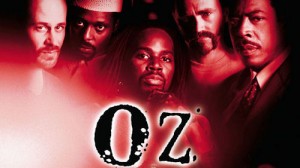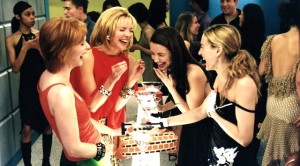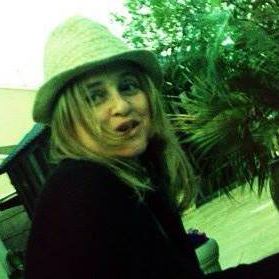By Christina Kallas
 The prevailing idea is that film, like any other art form, is made by a single genius. TV drama is, however, more often than not the result of collaboration between many writers and minds. How is that possible, and what does it mean?
The prevailing idea is that film, like any other art form, is made by a single genius. TV drama is, however, more often than not the result of collaboration between many writers and minds. How is that possible, and what does it mean?
Writers’ rooms already existed back in the 1950s, when three or four of the old comic legends would hang out and try out their jokes and material. The writers’ room concept has evolved through time. In the 1980s and 1990s the rooms grew bigger, you went from having three or four writers in a room to 15 writers. Today, due to budget limitations, the rooms have started getting smaller again. Whether it’s a large group of comedians trying to one-up one another with jokes on a sitcom or writers being assigned specific episodes after a small group of writers has “beat out” the storyline together, what is important is the physical presence of the writers in one space – thus “room.”
Is the room smarter than the individual? For one thing, it’s a bigger brain. Still, and although the predominant idea is that American TV is produced in writers’ rooms and that the writers’ room model is directly linked to good TV writing, the conversations show that not all showrunners are friends of the room concept. And where there is a room, the way it is run is in no way pre-defined or canonical. Almost each room seems to work a bit differently from any other, depending on who the showrunner is and how she likes to run it.
The next question is then, does it make it easier if there is a writers’ room? For some shows one has to produce 51–52 pages for 45 minutes, and once the writer has a beat sheet which summarizes everything in 19–20 pages, it usually takes her 1–2 weeks to write an episode. Then there are notes, a second draft, a read-through with the actors. If the whole process goes through the room, doesn’t that slow it down? Or does it make it easier? The more the merrier; but if we are going to use proverbs, don’t too many cooks also spoil the broth? And isn’t it more time-consuming as a whole?
The time aspect is indeed the main reason why some showrunners dislike the room concept. For instance, a successful procedural like Law & Order will not have a writers’ room in the classic sense of the word. In our conversation Warren Leight explains that this is because a group cannot plot that tightly. Then there is the other extreme. I have often heard the story of two or more writers’ rooms working in parallel, in competition against each other for the best script of the same episode of one show or another.
So what exactly happens in the room? Tom Fontana, creator among others of legendary Oz and of Homicide: Life On The Street, is one of the showrunners who is not particularly enthralled by the concept, so he is naturally rather critical when he describes a day in the room: “In most writers’ rooms,” he tells me, “everyone comes in at nine o’clock to break stories, but out of eight hours, you spend at least an hour and a half eating, you spend at least two hours talking about your life, an hour on your cell, and so the actual amount of time that the necessary work gets done, is a relatively small part of a very long day.” Which is why for his shows the writers get together but not in a “let’s sit around and write stories” way. What works for him is to sit down one on one with the writer who’s going to write an episode and work with her on that episode.
Of course this is not how any other showrunner who finds the writers’ room a useful concept would describe it. Still, running a room means leading a group of people and that can prove strenuous. Whoever gives guidance to the room will try to reach consensus about directions on stories, because someone has to lay out the storyline, whether through reasoning or by simple taste. Someone has to be the filter because otherwise the writers will just go on talking. Someone has to steer the ship.
Which means that naturally hierarchy defines this world of synergy and collaboration and creative freedom. In Robert Carlock’s words: “There’s a hierarchy of seniority: there’s certain people who will take a room (give guidance to the room), certain people who are learning to take a room and people who are staff writers.” Actually, starting from the top, the hierarchy goes from executive producer to co-executive to supervising producer to producer, co-producer, and then down to executive story editor, story editor and staff writer. Depending on what the issue is at hand, the room can be led by different people, but the final word always belongs to the showrunner.
As the above-mentioned titles show, a TV writer’s job is not just about writing. Part of her job is producing – she’ll go to casting, she’ll take part in creative meetings, she’ll be on set. Again, this is not always the case, and the producers’ titles depict first and foremost the hierarchy in the writing staff. It’s a way to delineate the level at which you are functioning – it’s like ranks in the military, from private to general. It’s a raise in pay and a raise in responsibility; it’s an acknowledgment of the fact that you’ve been in the business for a long time and that you have more of a track record. There are, however, co-executive producers who are really doing what most people would consider the nuts and bolts of producing, which is what things cost and how much time it will take, and juggling the things that the writers want with what is actually practical, while at the same time dealing with the network and the studio. Beyond all that, their job is creative. A showrunner’s job is primarily to make sure that the scripts are produced on time and in the best possible quality – and to run the show according to these scripts, to follow through with the show’s vision.
 Jenny Bicks tells me how she ran the room at Sex and the City, implementing what they called the “independent study,” whereby each writer would take care of her own episode, from start to finish. She would leave the room and write an outline, after it was broken down – an outline scene by scene, describing what happens in each scene. Then (as a showrunner) Jenny would take the outline back into the room, she would take comments from the room and then give notes to the writer about what she thought they should address. The writer would again go away, write their script and the same thing would happen: a script would come back into the room, everybody would read it, give notes, and then the writer would make the changes which the showrunner decided upon – and only then would it go to the studio and then to the network.
Jenny Bicks tells me how she ran the room at Sex and the City, implementing what they called the “independent study,” whereby each writer would take care of her own episode, from start to finish. She would leave the room and write an outline, after it was broken down – an outline scene by scene, describing what happens in each scene. Then (as a showrunner) Jenny would take the outline back into the room, she would take comments from the room and then give notes to the writer about what she thought they should address. The writer would again go away, write their script and the same thing would happen: a script would come back into the room, everybody would read it, give notes, and then the writer would make the changes which the showrunner decided upon – and only then would it go to the studio and then to the network.
Which highlights the next question: how great is the danger that working with a room and trying to reach consensus will lead to the lowest common denominator? One would expect it to be very great; however, the results seem to imply that the opposite is the case. Can it be that a group is ultimately more courageous in breaking ground, in challenging preconceptions, in going places one has never visited before?
Next Up: Post #3: And What Should We Call It? (scheduled for May 28th)
If you are interested in reading more, including the full interviews on their process as writers with creators such as Terence Winter, Tom Fontana, Warren Leight, Robert Carlock, Janet Leahy and many more, you can purchase the book Inside the Writers’ Room. Conversations with American Writers here.
 Christina Kallas has written and produced several feature films and TV shows in Europe before she relocated to New York in 2011, where she is currently teaching at Columbia University’s and Barnard College’s Film Programs, and editing her next feature film (and her first as a director,) 42 Seconds of Happiness. She is the author of six books in her three writing languages, including the above book as well as Creative Screenwriting: Understanding Emotional Structure (London/New York, 2010). Most recently, she was honored for her outstanding contribution to the international writers’ community in her eight years of tenure as President of the Federation of Screenwriters in Europe. You can reach her at improv4writers@gmail.com and follow her on Facebook or Twitter and join the Writers Improv Studio group page for updates.
Christina Kallas has written and produced several feature films and TV shows in Europe before she relocated to New York in 2011, where she is currently teaching at Columbia University’s and Barnard College’s Film Programs, and editing her next feature film (and her first as a director,) 42 Seconds of Happiness. She is the author of six books in her three writing languages, including the above book as well as Creative Screenwriting: Understanding Emotional Structure (London/New York, 2010). Most recently, she was honored for her outstanding contribution to the international writers’ community in her eight years of tenure as President of the Federation of Screenwriters in Europe. You can reach her at improv4writers@gmail.com and follow her on Facebook or Twitter and join the Writers Improv Studio group page for updates.





